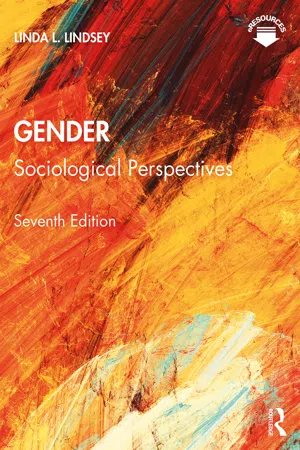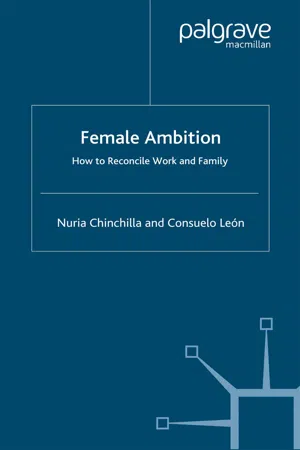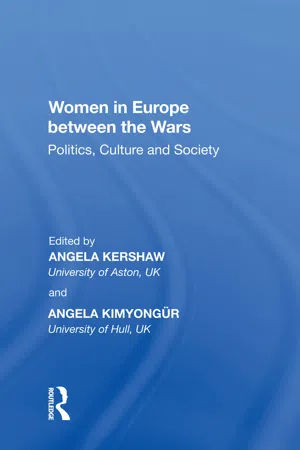History
Women in Europe
"Women in Europe" refers to the historical experiences, roles, and contributions of women across the continent. This encompasses various aspects such as women's rights movements, social and economic status, and cultural representations. The study of women in Europe provides insights into the changing dynamics of gender relations, societal norms, and the impact of historical events on women's lives.
Written by Perlego with AI-assistance
Related key terms
1 of 5
3 Key excerpts on "Women in Europe"
- eBook - PDF
Gender
Sociological Perspectives
- Linda L. Lindsey(Author)
- 2020(Publication Date)
- Routledge(Publisher)
Scholarly work is scrutinizing the past with the goal of uncovering hidden elements in the lives of women from all ranks. As we will see, these uncovered elements are vastly different from centuries of discourse that highlighted a limited, circumscribed set of “proper” roles for women. These discourses date back to the earliest writings of the Greek philosophers and center on debates about women’s place, women’s souls, and women’s sexuality, and the suitability of women for marriage and procreation. Writings of this type were used, and continue to be used, to justify a patriarchal status quo. What is clear is that the centuries of debate on “women’s themes” do not constitute a women’s history. Another pioneering women’s his-torian, Mary Ritter Beard (1876–1958), asserted that in the 2,500 years history has been written, most male writers overlooked the histories of females. In historical writing, the whole of human experience has been dominated by the political, economic, and military exploits of an elite, powerful group of men. From the historical glimpses in this chapter, we will find that throughout history, women have assumed a multitude of vital domestic and nondomestic roles, many of which were ignored or relegated to inconsequential historical footnotes. Western History and the Construction of Gender 159 PLACING WOMEN IN HISTORY With a strong feminist thrust, the revitalized women’s movement of the 1960s provided the catalyst for the independent field of “women’s history” to emerge. In the 1990s, many historians shifted to “gender history.” The distinction is an important one. Historians favoring a gender history approach focus on the power dynamics between men and women. Those favoring a women’s history approach tend to focus on social history , also called the “new social history ,” that studies the lives and experiences of ordinary people. - eBook - PDF
Female Ambition
How to Reconcile Work and Family
- N. Chinchilla, C. León(Authors)
- 2005(Publication Date)
- Palgrave Macmillan(Publisher)
7 1 Being a Woman in the Twenty-first Century ‘The past is a prologue.’ Shakespeare ‘Tell me what you truly love and you will have given me an expression of your life.’ ‘You love what you live.’ J.G. Fitche The history of women and feminism Our times are undoubtedly a time of women. 1 There are three basic events that have taken place around the status of women in this century: the right to vote with its consequent legal autonomy with respect to civil rights; greater equality in access to education; and the massive entry of women in the job market. Much has been written about this social change; however, the history leading up to it is as yet unwritten, when women did not appear in public, visible forums, when they played a role in events that are not mentioned by historical sources, and when they acted as family support, shaping the private life of peoples. They were also present at this time, but in a different way. In feudal times (from the tenth to the thirteenth centuries), women in the upper classes were able to have and administer feuds, they participated in the Crusades and governed, and some even achieved high political, economic and social standing due to their position, 8 Female Ambition lands, family or business. 2 This situation changed in later centuries and particularly in the modern, contemporary era with the devel- opment of the bourgeois mentality and the influence of the 1804 Napoleonic Code, which would be copied by other countries. 3 Hegel justified the causes of this marginalization by claiming that men had to achieve in the service of the three prevailing social activi- ties, namely science, state and economy, precisely those that Weber regarded as the heritage of Western civilization. Many Catholic femi- nist movements encountered difficulties in their struggle for universal suffrage, particularly in England. Perhaps the reason was that women represented a sector of conservative ideology. - eBook - ePub
Women in Europe between the Wars
Politics, Culture and Society
- Angela Kimyongür(Author)
- 2017(Publication Date)
- Routledge(Publisher)
Chapter 1 Women in Europe between the Wars: a Culture of Contradictions Angela Kershaw and Angela KimyongürGriffin and Braidotti's Thinking Differently: A Reader in European Women s Studies begins with an ironic challenge to the reader to name five feminists from the United States, five from Britain and five from other European countries.1 An equally difficult challenge might be to ask readers about to embark on this book to name five women active in European politics, culture or professional life during the years between the two World Wars. The difficulty of such a task is unsurprising given the recurrence in the essays in this volume of motifs of exclusion and marginalization, experiences which characterized women's activities in all areas of public life during the inter-war period. Politics continued to be defined as a masculine sphere, even after the granting to women of the right to vote and to stand for election; in literature, women's writing was excluded from the canon and thereby from serious critical consideration; in professional life - journalism, public service or education, for example - women had to fight for recognition and resist discourses which often sought to relegate them to the private sphere.And yet, it is not sufficient to approach the study of women in the inter-war period only from the perspectives of marginalization and exclusion. A wide range of research has already shown that inter-war women certainly were active in the cultural, political and social domains between the wars. Nonetheless, their activities and achievements are not necessarily familiar to readers today. In some cases, this is because adequate account was not taken of their activities by critics and commentators at the time.2
Index pages curate the most relevant extracts from our library of academic textbooks. They’ve been created using an in-house natural language model (NLM), each adding context and meaning to key research topics.


